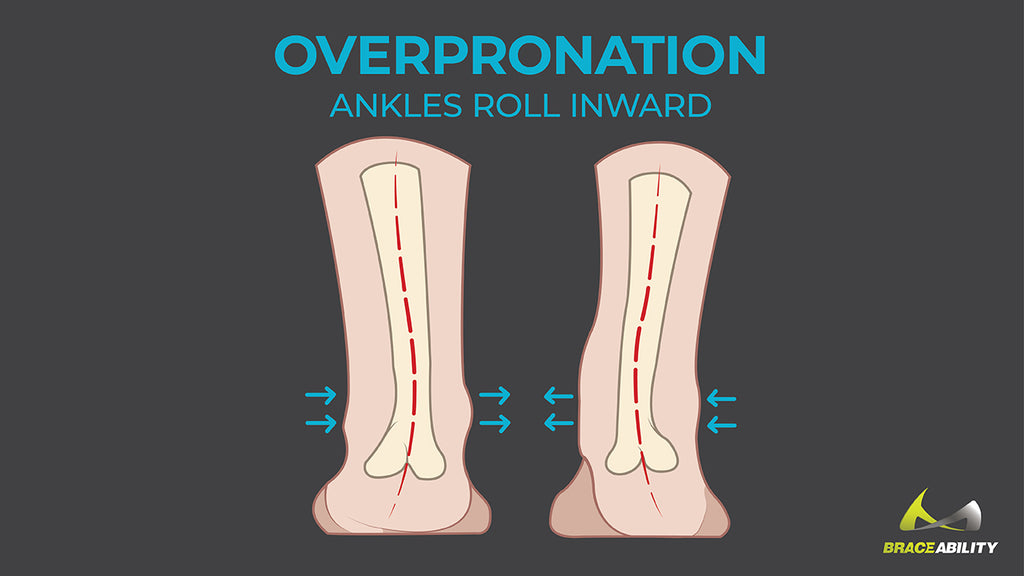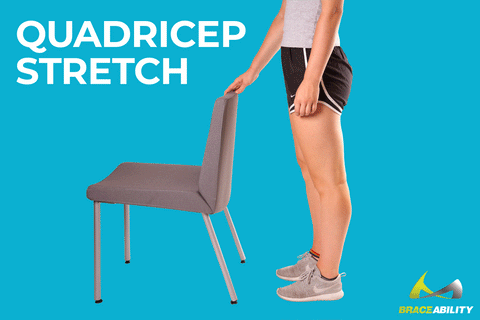How To Fix Excessive Supination and Overpronation: Running Expert Gives an Inside Look
Analyzing Your Foot Fall: How to Fix Supination and Overpronation
As you run, first, your heel hits the surface, followed by the ball of your foot. As this activity happens so fast, it’s hard to completely understand how your foot falls. This makes it difficult to identify when your foot is falling incorrectly. Many people will spend time searching for treatments for calf, ankle, knee or back pain without even realizing that the source of their pain is actually in their foot.
How To Tell if You Overpronate
The term ‘pronate’ or ‘pronation’ is often misused when discussing the condition of the foot where an inward rolling motion occurs. Every person has a slight degree of ‘pronation’ as it is required for the foot to function properly. Issues begin to occur when an individual begins to ‘overpronate’ or pronate excessively.
Overpronation occurs when the foot arch flattens out and stretches the muscles, tendons, and ligaments underneath the foot. When an individual is experiencing this condition, pain or discomfort will most commonly begin in the arches of the feet and heels. It will often spread to the calves, ankles, knees and lower back if the irregular foot fall is not corrected.

How To Tell if You Supinate
Supination or ‘underpronation’ is the exact opposite of overpronation. Supination is the outward roll of the foot during normal motion. During your running gait, the heel lifts off the ground and the forefoot and toes are used to propel your body forward. Excessive supination occurs when the propelling motion is in action and your foot dramatically rolls outward.

How To Stop Running on the Outside or Inside of Your Foot: Gait Analysis
Scott Gall, former collegiate distance runner, US Olympic Team Qualifier, and former member of the US Mountain Running Team and US Snowshoe Team, gives us an inside look at the struggles of overpronation and supination for runners. Scott and his wife now own The Runner’s Flat, located in Cedar Falls, Iowa, where they are able to help like-minded runners improve their performance, stay healthy and maintain the quality of life through finding the right shoe.
The Runner’s Flat offers community events, run clubs, kid’s programming, and maybe most helpful to avid runners, is the professional gait analysis and shoe fitting. During a shoe fitting, The Runner’s Flat puts you on a treadmill where they can see you in action. The shoe specialist will then take a video of your footfall from behind to help gather crucial information on your unique stride. This process is called a gait analysis. This analysis allows the specialist to determine whether you overpronate, supinate, or have the desired, neutral foot fall.
After the gait analysis is complete, the specialist will determine which shoe he/she feels is best for your specific foot fall. Typically, you will be brought 4 or 5 different shoes that help neutralize your foot fall. When you get it narrowed down based on comfort, the specialist will put you back on the treadmill to ensure the shoes you have selected bring you back to that neutral foot fall.
What Type of Shoe Should I be Wearing if I Overpronate?
When it comes to overpronation, there are many more options and varieties of shoes available to correct your foot fall back to neutral by adding more stability. By doing this, you will help prevent injury and improve performance. A recommended shoe for overpronation is the Mizuno Men’s Wave Paradox 4 Running Shoe.
Scott emphasizes the importance of progression. He often warns his customers that even though you have been put in the right shoe, you won’t be able to go from zero to one hundred the next day. Your foot is in a habit of overpronating and that habit will take time to break.
A continual conversation with their customers is extremely important to Scott. He tells us that in order to make sure his customers are on the right track, he likes to check in with them to make sure everything is progressing how it should. If you have been put in the right type of shoe, but are still experiencing issues after a prolonged period of time, Scott suggests that shoe insoles are a good idea.
Stop Worrying About Running on the Outside of Your Feet: Industry Expert Gives an Inside Look at Supination
According to Scott, a specific shoe is not necessarily made to correct supination. This is because supination does not tend to cause serious issues, so there is really no reason to actively correct it. Scott says that he typically suggests a neutral shoe to people who supinate.
Shoe Adjustment Cushion for People Who Walk on the Side of Foot
If you’ve tried different kinds of shoes and nothing has worked, maybe it’s time you try a shoe insole. A heel wedge can help to add extra stability to your shoe, correcting your foot fall to a neutral position if your shoes just aren’t making the cut. These premium, gel heel wedges correct the position of your heel, relieve pain, add support, and reduce uneven wear on shoes caused by overpronation and excessive supination.
How to Stop Walking on the Outside of Your Foot: 5 Exercises for Supination
-
Toe Touch
Sit on the floor with your legs outstretched in front of your body. Grab your toes. Pull your foot upward and hold for 15 seconds. Release and repeat with other foot.
-
Quadricep Stretch
Stand on one leg, balancing yourself with a chair or wall. Grab one foot behind your buttocks. Pull up on the leg in order to feel a stretch in your thigh. Hold for 20 seconds and release. Repeat with next leg.
-
Leg Raises
Strengthen your inner thigh with leg raises by laying on the floor on your side. Raise your leg up and down 20 times. Turn over and repeat with other leg.
-
Butterfly Stretch
Sit on the floor and bend your knees so that the soles of your feet are touching. Push your knees toward the floor to feel a stretch in your inner thigh. Hold the stretch for 10 seconds. Release and repeat five times.
-
Lifted Toe Step
While standing, take a step forward as if you are walking. When your foot is forward, stop the motion when your heel hits the floor. Instead of rolling forward onto the ball of your foot, suspend the front of your food about one or two inches from the floor. Hold the position for 10 seconds. Repeat 15 times. Then switch to the other leg.

















